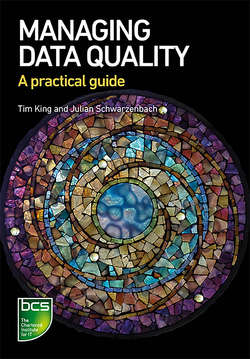Читать книгу Managing Data Quality - Tim King - Страница 23
На сайте Литреса книга снята с продажи.
ОглавлениеThe data asset
7
Unlike physical assets, data support strategic decision making; get this wrong and you will end up making incorrect, potentially expensive, decisions that could have long-term impact for the organisation. Also, unlike physical assets, when the data asset is used, it is not degraded, consumed or destroyed; in fact, the more data are used, then arguably the more value they could generate.
Whatever sector your organisation operates in, there are benefits to be gained from treating data as an asset to your organisation. This means having a more balanced view about the importance of the data that drives organisational decisions and activities alongside the software and applications that use it.
The phrase ‘treat data like an asset’ is used increasingly frequently. Assets, though, come in many forms. So, what type of asset is enterprise data?
Some assets can be large, robust, fixed assets that, once built, will exist for centuries, such as a building or castle. Data are not robust like this and perhaps need to be considered more like a sandcastle, where the individual grains of sand represent items of data, and the configuration of sand that makes the sandcastle is the information that has value to the organisation. A sandcastle is fragile and can easily be degraded by wind and waves. Like a sandcastle, data and information are fragile assets that can easily be degraded by people, systems and processes. The reasons why data quality is difficult to manage are explored more in Chapter 2.
Data risk losing their credibility if their condition is not monitored and the quality understood and nurtured. This might seem difficult to achieve, but we have written this book to show otherwise. In some cases, actual increases in data quality have not been recognised by organisations because outdated myths persist about the quality of data being poor.
The data life cycle
Data, like other assets in your organisation, have a life cycle. The benefits of good quality data will be delivered in cycles or distinct phases, from acquiring data all the way through to eventual archive and deletion.
One view expressed by some data professionals is that data that are used increase in value, whereas data that are not used have little value and tend to degrade over time. This is not, however, always the case, depending on the context that the data relate to; for example, information describing how to decommission and dismantle a power station safely will not be used during the operational life of the power station, but it will be essential information at the end of its life.
Static data can be critical reference data for other, more fluid, data. For example, the address of a building doesn’t change (unless the postcode is redefined), but is a critical data asset as it links where people work, what is produced at that building and so on. Therefore, if the reference data are not valued, it undermines everything else.
